
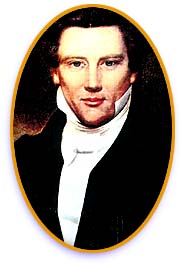
In 1844, six men who had been disfellowshipped (the Mormon term for excommunication) from the Mormon Church in Illinois for unethical practices vowed retaliation and published a libelous paper which maligned prominent people in the then-Mormon community of Nauvoo. Joseph Smith, mayor of the town, ordered the papers destroyed.
Smith was summoned by the governor to Carthage for trial and was then arrested on a charge of treason and jailed. When the illegal nature of the proceedings was pointed out to the governor, he commented that he did not think it was his duty to interfere as Smith was in the hands of the law. He turned the matter over to a local magistrate — a leader of a mob that rabidly opposed the Mormons. The next day, the mob stormed the jail and murdered Smith and his brother in cold blood.
In the ultimate perversion of justice, the ringleader of the conspiracy against Smith, Thomas Sharp, was brought to trial—and acquitted.
In a final effort to destroy the Mormons, the Edmunds-Tucker Act, a federal law, was passed in 1887 which disincorporated the Church of Jesus Christ of Latter-day Saints. The U.S. Supreme Court ordered the Church to wind up its affairs and turn its property over to the nation.
The judicial branch of government fell into step with the bigoted mindset that sought to destroy a religion and thus religious freedom — in conflict with the very reason the nation was established.
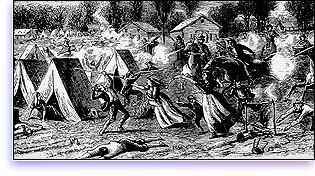
Nearly 100 years passed before justice was served. In 1978, President Jimmy Carter signed legislation to repeal the Edmunds-Tucker Act.
But that was by no means the end of bias against religion in the justice system.

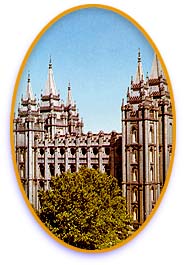
The World Wide Church of God, formed in 1933 in Eugene, Oregon, by Herbert Armstrong, belongs to the Adventist family of religions, which hold the belief that the second coming of Christ is near at hand, according to Dr. J. Gordon Melton of the Institute for the Study of American Religion.
Internal dissent led to the splintering of the Church in the 1970s. In 1978, several members who had left, and others who had been excommunicated, filed a lawsuit against the Church. Some who had continued as members of the Church collaborated with those who filed the suit in an apparent attempt to take over its management. Attorneys representing the ex-members went to the Attorney General of California and convinced him, on the basis of a California plumber’s affidavit, that the Church was selling some land in a different state (which the plumber had not seen) for vastly less than it was worth, and that financial impropriety was occurring. Notwithstanding this flimsy “evidence,” the Attorney General declared the Church to be in receivership. Stunned Church officials discovered this only when the receiver arrived on their doorstep with authority to take over the running of the Church.
Reflecting on their ordeal, Ralph Helge, general counsel for the Church, said, “The worst thing about the case was the circumvention of every protective legislative device in place to prevent such actions.”
It took the Church two full years to finally see justice done. The Court of Appeal stated in its decision that the legal action against the Church was, from its inception, “constitutionally infirm and predestined to failure.”
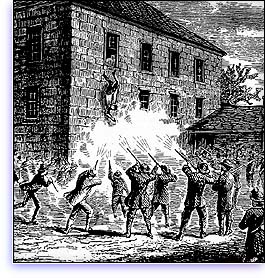
Another attorney for the Church, Stanley Rader, stated, “Nearly 200 years later the need for these [constitutional] guarantees is more urgent than ever. The wall of Church/State separation must stand. If it cracks and shatters, subjecting a small Church to State-dictated control and limitation, the states will be free to proceed against other churches, synagogues, and religious institutions of all kinds.” This was clearly a case where justice was a victim not only of the prejudices of members of the court, but also of false information spread by those appearing before them. False testimony is a frequent ploy used to put a religion itself on trial for its beliefs or practices. Despite the protections of the First Amendment, these attempts are sometimes successful.

The Church Universal and Triumphant, founded by Mark Prophet and carried forward after his death by his wife, Elizabeth Clare Prophet, has also suffered from such tactics. Gregory Mull, a San Francisco building designer, became a member of the Church in 1974 at the age of 57. He moved to Los Angeles in 1979 to work for the Church, which loaned him $37,000 during his relocation. He signed promissory notes for the loans. He resigned after only eight months on Church staff. In an attempt to get the money repaid, the Church filed suit against Mull in 1981. Mull countersued for fraud, duress, undue influence, involuntary servitude, assault, extortion and intentional infliction of emotional distress — asking damages of $253 million. The case came to trial in 1986. During the trial, Mull was allowed to present numerous emotionally charged assertions to the court. While the Church was allotted one day in the four-week trial to present evidence of the promissory notes, the remainder of the testimony was devoted to putting the practices and beliefs of the Church on trial.
Inflamed by Mull’s statements, the jury found against the Church and Elizabeth Clare Prophet and, unbelievably, awarded $1.5 million in compensatory and punitive damages to Mull. The injured party — the Church — was not only put on trial, but found guilty, and denied the recourse for which it had turned to the justice system.

Scientology is today fully recognized as a bona fide religion both in the United States and around the world. Yet, until a few years ago, it was plagued by cases brought by a few who viewed litigation against a church as a potential money-making proposition. One case, Larry Wollersheim vs. the Church of Scientology of California, is an example of how courts can be manipulated to produce an undeserved windfall. It also shows how judges abusing their position can become purveyors of gross injustice.
Wollersheim’s claims were premised upon clear-cut falsehoods. His trial testimony — when he had every motivation to invent, embellish and exaggerate — directly contradicted what he had said while he was in the Church at a time when he had no reason to do anything but tell the truth. Before becoming a litigant, he was enthusiastic about the positive effects of the Scientology religion on his life. But with a jury present, a judge presiding, and the scent of millions of dollars in the air, everything changed.
And who was Wollersheim? During the trial, more than 40 witnesses who knew him before, during and after his involvement with the Church of Scientology testified to his untrustworthiness and described his history of pursuing whatever course would forward his own interests, regardless of the consequences to others.
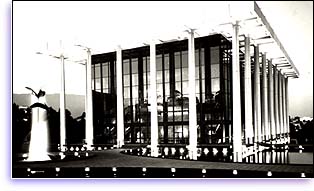 The testimony about Wollersheim is instructive, and, especially with the wisdom that hindsight brings, it is chilling that the justice system can be perverted enough to reward such a person. That testimony paints a portrait of Wollersheim’s wife-beating, draft evasion, abuse of illicit drugs including at least 300 LSD trips, and his long series of self-serving unethical business episodes which have cost others hundreds of thousands of dollars. And, not unlike his performance in court in 1986, he put on a convincing show to avoid the draft in the 1960s — presenting himself as “mentally damaged.”
The testimony about Wollersheim is instructive, and, especially with the wisdom that hindsight brings, it is chilling that the justice system can be perverted enough to reward such a person. That testimony paints a portrait of Wollersheim’s wife-beating, draft evasion, abuse of illicit drugs including at least 300 LSD trips, and his long series of self-serving unethical business episodes which have cost others hundreds of thousands of dollars. And, not unlike his performance in court in 1986, he put on a convincing show to avoid the draft in the 1960s — presenting himself as “mentally damaged.”
Even the judge who conducted the trial recognized Wollersheim for what he is. “I have no use for Wollersheim,” the judge told a Church lawyer six years after the verdict. “He’s a wife beater and a draft dodger.”
Wollersheim first received Scientology services in March 1969. For the next 10 years — the time he spent in the Church — he did not use drugs and was able to hold a job. A document in Wollersheim’s own handwriting memorialized his belief that the Church had “saved my life.” In fact, many people in the Church went out of their way to help him with his problems, a fact he gratefully acknowledged again and again at the time.
Yet, years later, Wollersheim sued the Church of Scientology, claiming that he had suffered “damage” from religious services. Most of his claims were so legally deficient they never made it to a jury. But the surviving portion was tried in 1986.
The jury awarded Wollersheim $5 million in compensatory damages and $25 million in punitive damages — a figure a higher court would later call “preposterous.”
And just how was this feat pulled off?
* A climate of fear and intimidation had been induced in the courtroom during the trial by the judge’s imposition of unprecedented security measures, supposedly due to the possibility of unspecified “disturbances,” and by the plaintiff and his counsel hiring menacing-looking bodyguards to “protect” them from non-existent dangers. In fact, it turned out that several of the jurors somehow gained the impression that the bodyguards were actually Scientologists behaving in a fashion meant to intimidate them — likely exactly the result intended by plaintiff’s counsel.
* Wollersheim’s attorney arrived at the courthouse on Halloween dressed as a parody of a Church of Scientology minister — complete with robes, a cross and a volume of Scientology religious ceremonies — with the sanction of the court. Judges were seen joking with Wollersheim’s lawyer while he was dressed in his “clerical” garb.
* The trial judge systematically reversed rulings the Church had obtained during preliminary hearings which stipulated that Scientology religious counseling would not be a subject of inquiry in the case. These reversals effectively condoned Wollersheim and his attorney holding up to ridicule and contempt the religious beliefs of millions of people.
* Wollersheim’s “expert” witnesses, psychologist Margaret Singer and sociologist Richard Ofshe, focused solely on ridiculing the Scientology religion through ersatz “scientific” analysis. It was not unlike allowing scientists to “debunk” the immaculate conception in a case where a Catholic claimed to have suffered mental harm through attending confession. But it became even more disturbing when both the American Psychological Association (APA) and the American Sociological Association (ASA) forcefully rejected their theories as “unscientific,” and several courts refused to allow them to testify as experts at all, though they had been given great deference in the Wollersheim court.
 Singer and Ofshe would later sue their professional associations in an attempt to gain a reversal of their positions — only to lose the case and find themselves landed with massive fees and costs awards owed to the APA and ASA. Yet their eviscerated views formed a central part of Wollersheim’s “evidence.”
Singer and Ofshe would later sue their professional associations in an attempt to gain a reversal of their positions — only to lose the case and find themselves landed with massive fees and costs awards owed to the APA and ASA. Yet their eviscerated views formed a central part of Wollersheim’s “evidence.”
* Following the decision, Church members held peaceful protests for several weeks outside the courthouse. Thousands participated, and there was never any incident of violence or intemperate behavior on the part of the Scientologists. Yet stories soon started to circulate — and persisted for years afterward — of alleged acts of violence and vandalism by the protestors which had no connection to the Church or its members, or which had never occurred at all.
In the end, a fair outcome was manifestly impossible. How so? Because, as the Church later learned — through an interview published by The American Lawyer and other sources — the trial judge entertained strong prejudices against both the Church and its trial counsel throughout the trial, and even allowed the jury to become aware of his personal views. As just one example, when his aging dog was found dead in his swimming pool during the trial, the judge harbored the suspicion that the Church was “somehow” responsible — even though his veterinarian had told him the dog had died of a heart attack and then fallen into the pool. The judge also asserted the false belief that “Church agents” had slashed his car tires and were following him. Finally, he harbored ill-will toward the lead defense attorney for suggesting that the jury had been unfairly influenced in the case — a suggestion that later proved true when it emerged that the rumors heard by the jury were traced to none other than the judge himself.
In a similar case, tried a year earlier in Oregon under a judge who eventually realized the problem of prejudice in his courtroom, the outcome was a mistrial and eventually a dismissal favorable to the Church. But no such outcome was ever possible in the scenario which confronted the Church in this case in Los Angeles. While the compensatory and punitive damages awards were eventually reduced to a fraction of the original figures, this travesty remains unresolved to this day — but another of the bizarre results the LA courts have become famous for.

A religious leader who acts upon his conviction to correct wrong or improve existence for his fellows is all too often liable to find himself on the receiving end of judicial persecution like the Rev. Dr. Martin Luther King Jr.
King was imprisoned repeatedly on trumped-up or insignificant charges. He went to jail in 1960 in Georgia for violating parole conditions on a minor traffic conviction. Later the same year, he was indicted on baseless charges of tax evasion. He was jailed in 1961, in 1962 and in 1963 for peacefully protesting.
Even the law, which should have protected his rights, did its best to subvert them. As part of a campaign of harassment to dissuade him from his work, his telephones were tapped and his mail opened by the FBI. The bureau sent him fabricated hate mail as part of its Counter-Intelligence Program. Senior FBI officials even compiled a tape from the wiretaps and sent it to him anonymously with a hate-filled letter which stated, in part:
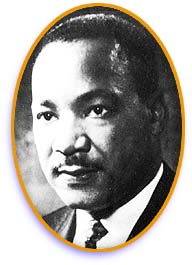 “KING,
“KING,
“In view of your low grade ... I will not dignify your name with either a Mr. or a Reverend or a Dr. And, your last name calls to mind only the type of King such as King Henry the VIII....
“King, look into your heart. You know you are a complete fraud. ... You are no clergyman and you know it. I repeat you are a colossal fraud and an evil, vicious one at that. You could not believe in God. ...
“King, like all frauds your end is approaching.”
On March 4, 1968, one month before King’s murder, an FBI internal memorandum stated its goal: “Prevent the rise of a ‘messiah’ who could unify, and electrify, the militant black nationalist movement. Malcolm X might have been such a ‘messiah’; he is the martyr of the movement today. Martin Luther King, Stokely Carmichael and Elijah Muhammad all aspire to this position.
“... King could be a very real contender for this position should he abandon his supposed ‘obedience’ to ‘white, liberal doctrines’ (non-violence) and embrace black nationalism.”
This document reveals the age-old fear political leaders and entities hold for religious leaders who have a strong spiritual bond with their adherents. If the followers “answer to a higher authority,” the thinking goes, they cannot be controlled by threats or material force and are consequently a potential “danger.”

In the words of the early 19th century American Unitarian clergyman William Ellery Channing: “It was the struggle for religious rights which opened (men’s) eyes to all their rights. It was resistance to religious usurpation which led men to withstand political oppression. It was religious discussion which roused the minds of all classes to free and vigorous thought. It was religion which armed the martyr and patriot in England against arbitrary power; and which braced the spirits of our fathers against the perils of the ocean and wilderness, and sent them to found here the freest and most equal state on earth.”
Everything that is good about America can ultimately be traced back to inspiration of a spiritual nature.
Religion is the one factor which permeates all aspects of an individual’s life and how he behaves according to his ideas of right and wrong. This extends to his vision of justice.
If that vision is flawed by prejudice, any attempt to administer justice can end only in injustice. And the human cost of prejudice is indeed high, as many examples have shown.
It is simply not enough to deal only with racism when one speaks of the need to eliminate discrimination and restore equality. Religious discrimination has done untold damage to the fabric of our nation through history.
Religious belief is no reason to take action against an individual, at any point of the judicial process; the only valid reason is an unlawful act.
Americans must be alert to the erosion of justice stemming from prejudice based on religious orientation. When the fundamental First Amendment guarantee of religious freedom is trampled upon, the nation itself lies in mortal danger.

